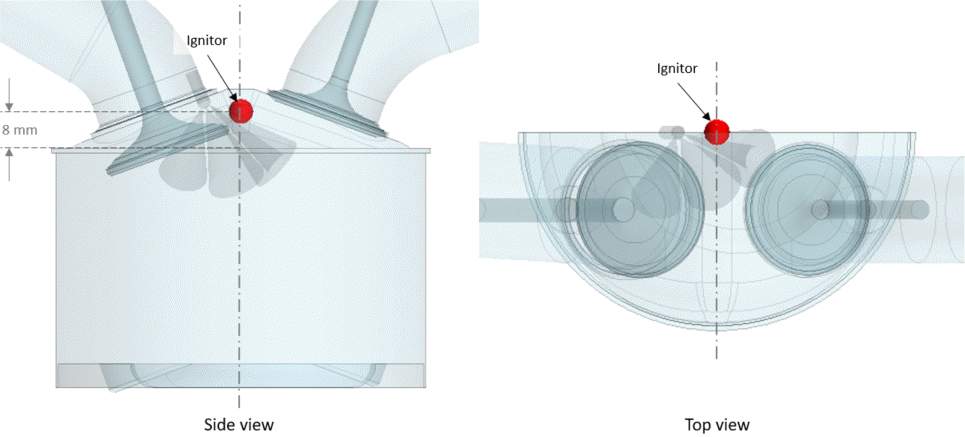Gasoline Engine: ECFM-3Z Combustion
In Simcenter STAR-CCM+ In-cylinder, you can simulate the combustion process in a gasoline engine using the Extended Coherent Flame Model Three Zone (ECFM-3Z).
The ECFM-3Z model is a general-purpose combustion model that is capable of simulating the complex mechanisms of turbulent mixing, flame propagation, and diffusion combustion that characterize modern internal combustion engines. In this tutorial, you use the ECFM-3Z model to investigate the spark ignition and combustion process of a fuel directly injected into a single engine cylinder. The engine setup and the fuel injection are the same as introduced in the Gasoline Engine: Charge Motion tutorial.
You create an ignitor on the symmetry plane and position it in the center of the cylinder head.

You set the ignition timing to 20.0 deg CA (degree crank angle) before top dead center (BTDC).
The simulation starts at 300 deg CA. You set the initial gas composition in the cylinder and ports using automatic composition initialization.
To ensure good cell quality for all crank angles during the run of the simulation, you set re-mesh criteria that are suitable for this engine geometry.
Starting from the final Gasoline Engine: Charge Motion simulation file, you clear the mesh and re-run the simulation until 800 deg CA using automatic time-step control. For combustion simulations, automatic time-step control adjusts the time-step size based on the preset valve lift thresholds, the start and end of fuel injection, and the ignition timing.
After the run, you analyze the simulation results using the post-processing capabilities that are available in Simcenter STAR-CCM+ In-cylinder.